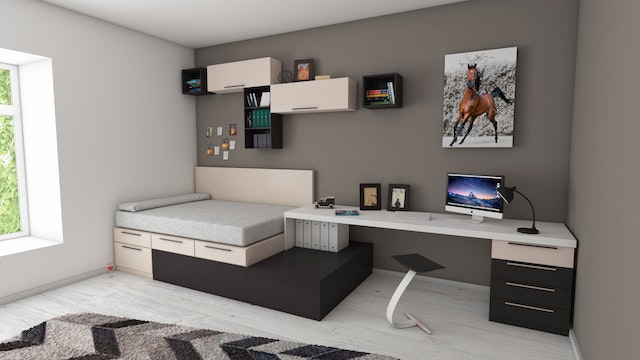The bedroom is one of the most important rooms in any home. It’s where you go to relax, recharge and get some much-needed rest. But have you ever thought about the impact that your bedroom background can have on your overall well-being? A bedroom’s background can refer to many things, including the color of the walls, the type of lighting, and even the type of furniture you choose. In this article, we’ll explore the importance of a bedroom’s background and offer some tips for creating the perfect bedroom atmosphere.
Why Is Bedroom Background Important?
The background of your bedroom can have a significant impact on your mental and physical well-being. For example, the color of the walls can affect your mood, energy levels, and sleep quality. The type of lighting you use can affect your circadian rhythm, which can impact your sleep and overall health. The furniture you choose can also impact your comfort levels and ability to relax.
Creating a bedroom background that promotes relaxation and restful sleep is essential for your overall health and well-being. It can help you fall asleep faster, stay asleep longer, and wake up feeling refreshed and rejuvenated.
Choosing the Right Wall Color
One of the most important aspects of a bedroom background is the color of the walls. The color you choose can have a significant impact on your mood, energy levels, and overall well-being. Here are some tips for choosing the right wall color for your bedroom:
Consider Your Personal Style
Your personal style should play a significant role in choosing the color of your bedroom walls. If you prefer a more minimalist and modern look, neutral colors like beige, grey, and white might be the best option. If you prefer a more bold and vibrant look, brighter colors like yellow, blue, or green might be more your style.
Think About Your Mood
The color of your walls can affect your mood and energy levels. If you want to create a calming and soothing atmosphere, consider using cool colors like blue or green. If you want to create a more energizing and invigorating atmosphere, consider using warm colors like orange or red.
Choosing the Right Lighting
The type of lighting you choose for your bedroom can also have a significant impact on your overall well-being. Here are some tips for choosing the right lighting for your bedroom:
Avoid Harsh Lighting
Harsh lighting can disrupt your circadian rhythm, which can impact your sleep and overall health. Instead, choose soft, warm lighting that creates a cozy and relaxing atmosphere.
Consider Dimmer Switches
Dimmer switches are a great way to adjust the lighting in your bedroom to fit your needs. They allow you to dim the lights when you’re getting ready for bed or increase the lighting when you’re reading or doing other activities.
Choose the Right Light Bulbs
The type of light bulbs you choose can also impact your sleep and overall well-being. Blue light, which is emitted by most LED light bulbs, can disrupt your circadian rhythm and make it harder to fall asleep. Instead, choose warm light bulbs or those labeled as “soft white” or “warm white” to create a relaxing atmosphere.
Choosing Comfortable Furniture
Finally, choosing comfortable furniture is essential for creating a bedroom background that promotes rest and relaxation. Here are some tips for choosing the right furniture for your bedroom:
Invest in a Good Mattress
Your mattress is one of the most important pieces of furniture in your bedroom. It’s essential to choose a mattress that is comfortable and supportive to help you get a good night’s sleep. Consider your sleeping position and any specific needs you may have, such as back pain or allergies, when selecting a mattress.
Choose the Right Pillows and Bedding
In addition to a good mattress, comfortable pillows and bedding can also contribute to a restful night’s sleep. Choose pillows that support your neck and spine and bedding that is soft and comfortable.
Consider the Size and Placement of Your Furniture
The size and placement of your furniture can also impact the feel and functionality of your bedroom. Make sure your furniture is appropriately sized for your space and arranged in a way that promotes relaxation and easy movement.
Incorporate Storage Solutions
Clutter can contribute to feelings of stress and anxiety, so it’s essential to incorporate storage solutions in your bedroom to keep it tidy and organized. Consider options like dressers, under-bed storage, and closet organizers to help keep your bedroom clutter-free.
Conclusion
To create a restful and relaxing bedroom, consider the colors on your walls, the lighting you choose, and the furniture you incorporate. By making thoughtful choices in these areas, you can create a space that promotes restful sleep and supports your overall well-being.



